Art
Three men with a pole on their head
February 1976: a performance art group calling itself Ddart walked around the Norfolk countryside for a week carrying on their heads a ten foot pole supported by hats resembling ice cream cones. They called this performance 'Circular Walk.' The UK Arts Council paid them £395 for this.The trio never really explained what the intended meaning of this was, except for the following brief statement later provided by Ray Richards, a member of the group:
More controversial was why the Arts Council had paid for it. John Walker, author of Art & Outrage, provides some details:
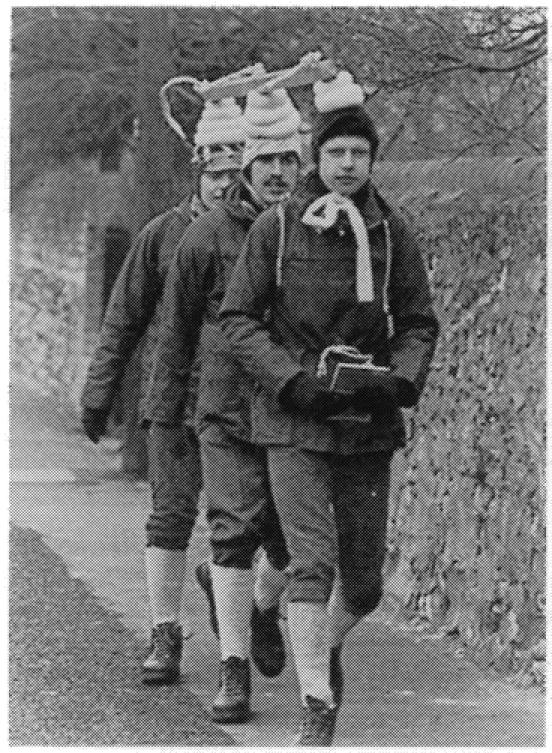
Image source: Art & Outrage
Posted By: Alex - Sat Dec 29, 2018 -
Comments (1)
Category: Art, 1970s
Curiosa
In addition to creating works of his own, artist Barton Lidice Benes collected random, weird stuff, which is detailed in his 2002 book Curiosa: Celebrity Relics, Historical Fossils, and Other Metamorphic Rubbish. Seems like it could be of interest to WUvies! Some of the items include:- Larry Hagman’s gallstone
- a straw used by Monica Lewinsky
- a statue of the Virgin Mary made out of dollar bills
- a penny found in Sigmund Freud’s couch
- a piece of coal from the Titanic
- a cross made out of nails from the Branch Davidian compound in Waco, Texas
- a fork used by actor Steven Van Zandt of The Sopranos
- Gore Vidal’s swizzle stick and coaster
- Art Buchwald’s toothpick
More info: wikipedia, poz.com

Posted By: Alex - Thu Dec 27, 2018 -
Comments (1)
Category: Art, Collectors
Céleste Boursier-Mougenot
I believe we've seen the birds-and-guitars piece before, but not the others.His Wikipedia page.
Posted By: Paul - Wed Dec 26, 2018 -
Comments (0)
Category: Art, Avant Garde, Beauty, Ugliness and Other Aesthetic Issues, Museums, Music, Europe, Cacophony, Dissonance, White Noise and Other Sonic Assaults
Karina Smigla-Bobinski
The artist's homepage.
Posted By: Paul - Sat Dec 22, 2018 -
Comments (1)
Category: Art, Avant Garde, Europe
Stanisław Szukalski
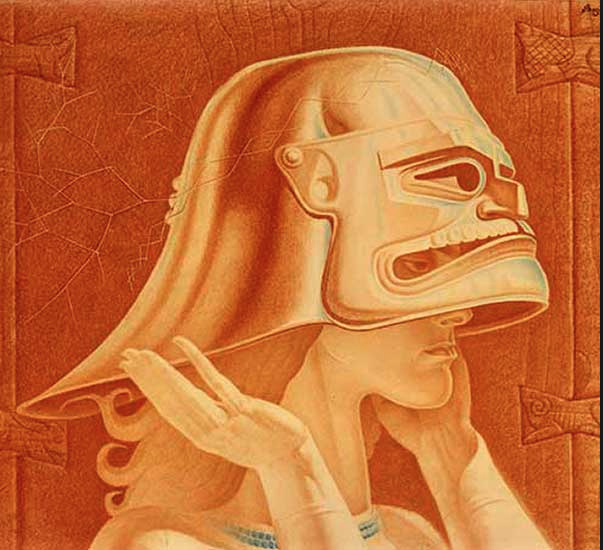
Stanisław Szukalski was a painter and sculptor who also developed the pseudoscientific historical theory of Zermatism, positing that all human culture was derived from a post-deluge Easter Island and that mankind was locked in an eternal struggle with the Sons of the Yeti. He illustrated this theory in his works.
Article source.
Artist's homepage.
Posted By: Paul - Thu Dec 13, 2018 -
Comments (1)
Category: Art, Avant Garde, Outsider Art, War, Documentaries, Bohemians, Beatniks, Hippies and Slackers, Europe, Twentieth Century
Copy Machine Art
Strange landscapes created on a copy machine using materials such as food packaging, plastic wrap, and fabric scraps to stand in for earth, water, and sky. By artist Dominique Teufen. More info: Wired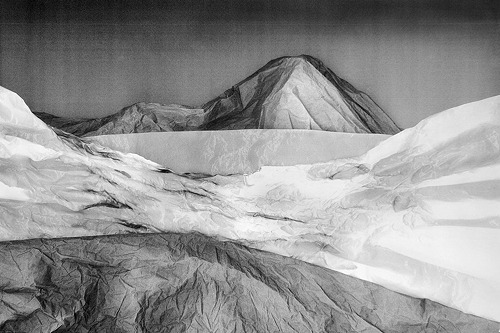
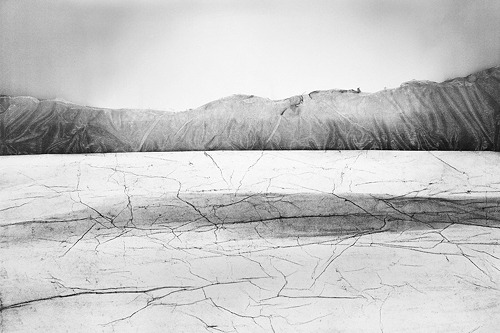
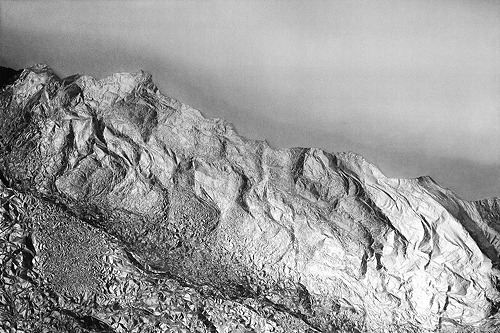
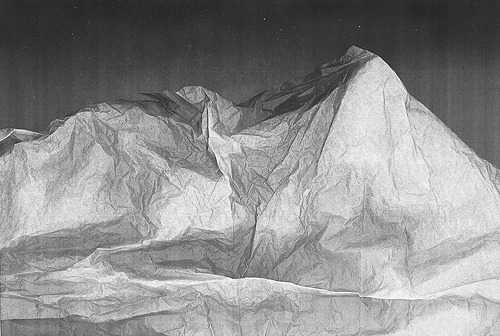
Posted By: Alex - Fri Nov 30, 2018 -
Comments (1)
Category: Art
Lady Sarah’s dissolving bathing suit
Back in the summer of 1975, there was a brouhaha about a 24-foot-long outdoor painting of a reclining nude (aka Lady Sarah) that featured a dissolving bathing suit. It was the creation of artist William Newman. Details below from Wikipedia.Note: the wikipedia article says that the painting was meant for the "inside of the building," but I think it should read the "inside of the construction site." The whole idea was that it was an outdoor painting created for the benefit of construction workers.
"At the time I was just thinking, great, I'll paint a bathing suit on it, but that bathing suit is coming off as soon as it rains. I mixed tempera paint with that famous Corcoran bathroom soap, and I knew it would wash off right away. I told Paul Richard, the art writer at the Washington Post, about it, and he wrote a story titled "Praying for Rain." The painting came to be called Lady Sarah, named after its model."
During the first night it was up, rain fell. There was a line of about 300 people waiting to look through the peephole, in reaction to the article. Before the bathing suit could be completely washed off by the rain, the piece was taken down. Newman washed off the soap bathing suit and repainted it to become permanently present. He gave the piece to the Corcoran to raise money.
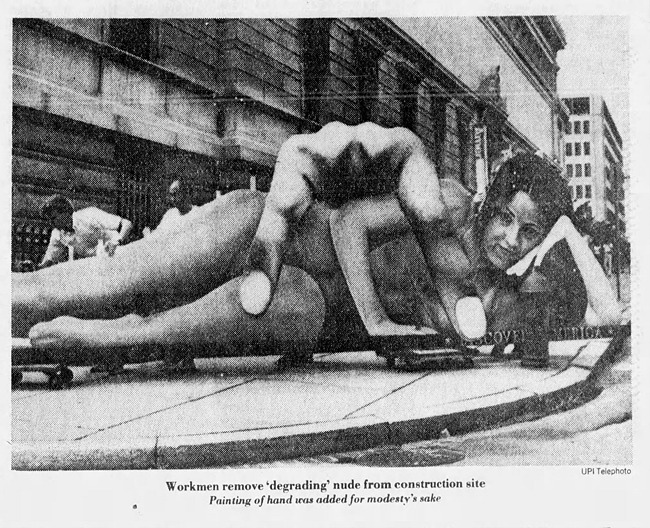
The Wilmington News Journal - Aug 15, 1975
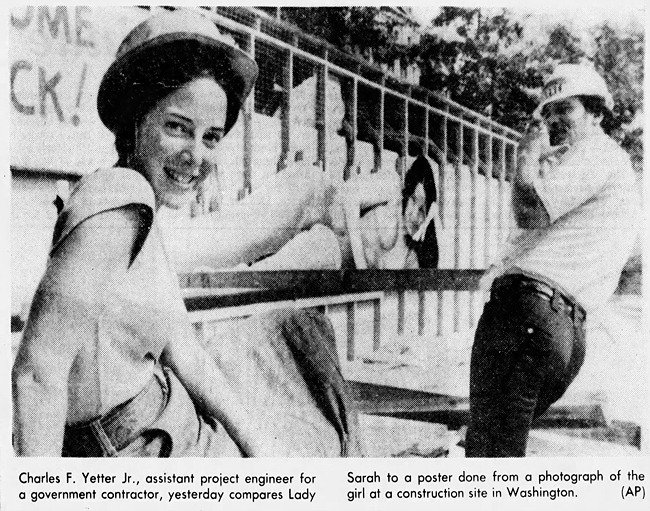
Asbury Park Press - Aug 14, 1975
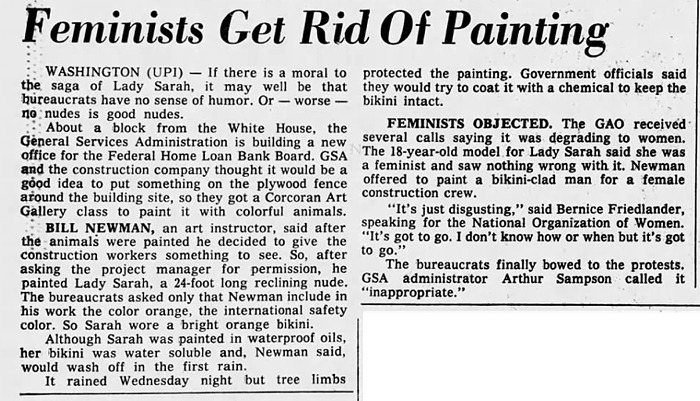
Orlando Sentinel - Aug 15, 1975
Apparently that wasn't Newman's last work featuring 'Sarah.' Two more followed, one of which again had a dissolving suit. From Washington City Paper:
The identity of 'Lady Sarah' was eventually revealed to be Sarah Tuft, an 18-year-old model and art student. I'm not sure, but I'm guessing this must be the same Sarah Tuft who's now a playwright. Photo below of Sarah Tuft (playwright) for comparison.

image source: sarahtuft.com
Posted By: Alex - Mon Nov 19, 2018 -
Comments (0)
Category: Art, 1970s
Artwork Khrushchev Probably Would Not Have Liked 17
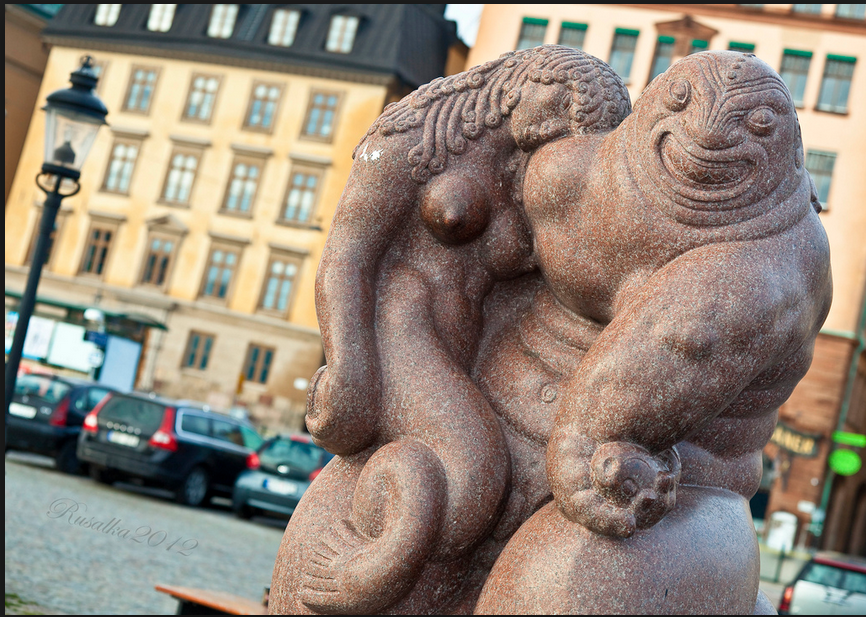
Sjöguden (The sea god) by Carl Milles.
Wikipedia page for the artist.
Posted By: Paul - Mon Nov 05, 2018 -
Comments (3)
Category: Art, 1930s, Europe, Russia
Hair Painting
Artist Jarrett Key paints with his hair. When I first saw the story about him in the Columbus Ledger-Enquirer, I thought that must mean he had cut some of his hair off and made a brush out of it. But no. He uses his hair as a brush while it's still attached to his head.Key says his inspiration came from his dead grandmother who appeared to him in a dream and said, "Your hair is your strength. Paint with your hair."

Key probably doesn't realize this, but he was actually anticipated in this technique by comedian Pat Paulsen who, back in 1966, before he became famous on the The Smothers Brothers' show, made headlines by claiming to be an artist who used his head as a paintbrush. Paulsen called it 'Cranial Painting.'
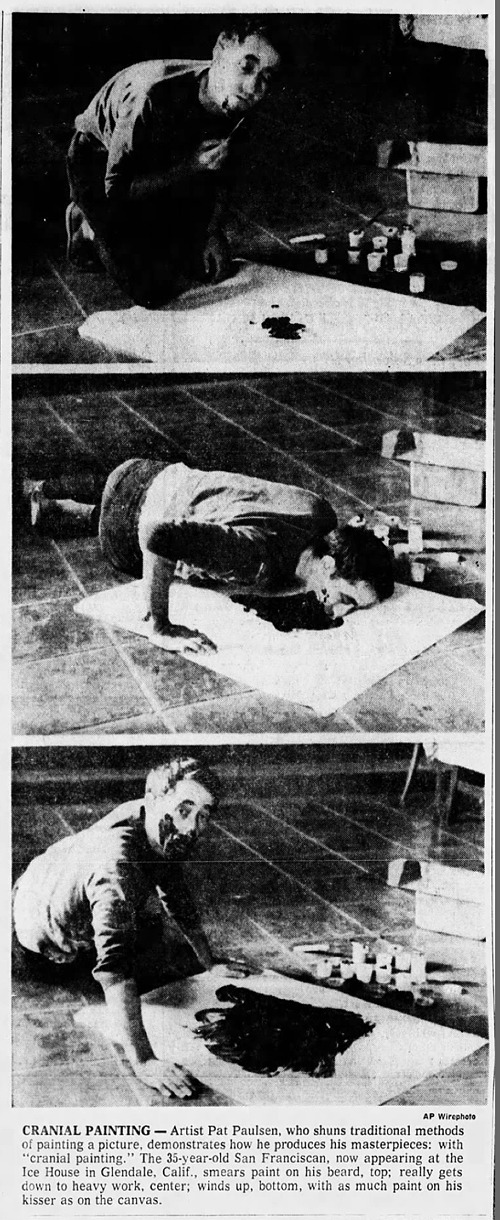
Arizona Republic - Mar 6, 1966
Posted By: Alex - Sat Nov 03, 2018 -
Comments (2)
Category: Art, Hair and Hairstyling
Mystery Illustration 79
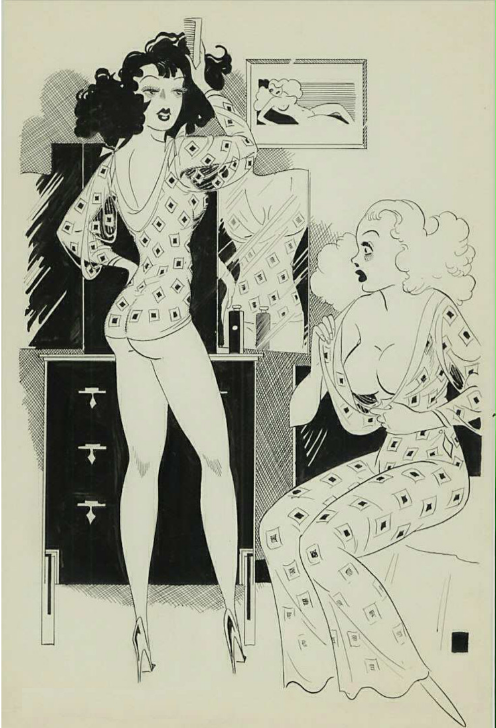
Identify the ultra-famous Golden Age (and beyond) artist behind this illustration.
The answer is here.
And after the jump.
More in extended >>
Posted By: Paul - Thu Nov 01, 2018 -
Comments (1)
Category: Art, Sex Symbols

| Who We Are |
|---|
| Alex Boese Alex is the creator and curator of the Museum of Hoaxes. He's also the author of various weird, non-fiction, science-themed books such as Elephants on Acid and Psychedelic Apes. Paul Di Filippo Paul has been paid to put weird ideas into fictional form for over thirty years, in his career as a noted science fiction writer. He has recently begun blogging on many curious topics with three fellow writers at The Inferior 4+1. Contact Us |




